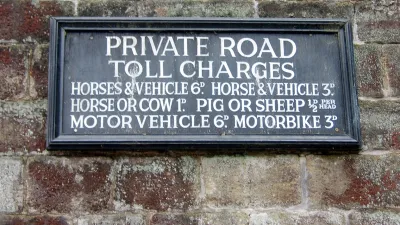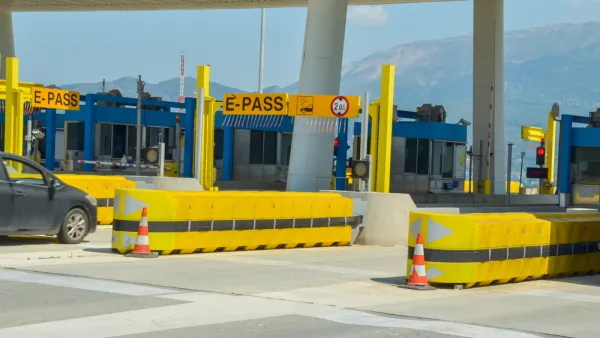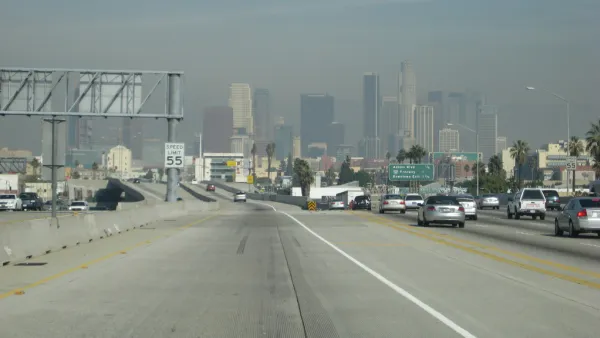Many people assume incorrectly that road tolls and parking fees harm poor people. In fact, they are usually less regressive than other funding options, and benefit poor people overall, particularly if some revenues are invested in alternative modes.

A basic economic principle is that resource consumption tends to be most efficient and equitable if prices (what consumers pay for a good) reflect marginal costs (the full costs of producing that good), unless a subsidy is specifically justified. One implication is that motorists should pay directly for the roads and parking spaces they use, with higher fees under urban-peak conditions to account for the congestion costs they impose.
A major obstacle to efficient pricing is the common, but often inaccurate assumption, that such fees harm poor people. This is generally wrong, and reinforces automobile dependency (an automobile-oriented transportation system which offers inadequate alternatives to driving and therefore forces people to drive more than optimal), which tends to harm physically, economically and socially disadvantaged people overall.
While it is true that a given fee is regressive (each dollar represents a greater portion of income for a poor than a wealthy person), tolls are generally less regressive than other roadway expansion funding options because poor people drive relatively little on such highways: many poor people are retired or unemployed, lower-income workers often have local jobs that do not require highway commutes, and if they do commute on major travel corridors they are more likely to use alternative modes, or travel off-peak because they often have off-peak work schedules.
As a result, road tolls are generally less regressive than financing urban highway expansion by increasing fuel taxes (which all motorists pay, not just urban commuters) or general taxes (which everybody pays regardless of how much they drive), and can be progressive overall if a portion of revenues are used to improve alternative modes, such as public transit, so lower-income travellers have better alternatives to driving.
Similarly, poor people often benefit from parking unbundling (paying directly for parking, rather than having it automatically included with building rents) and cash out (being able to choose cash instead of subsidized parking) because they tend to own fewer cars and value the opportunity for financial savings.
This has been a major issue of debate for the TRB Environmental Justice Committee, of which I am a member. Many members continue the old paradigm which assumed that helping poor travellers means helping them drive; I am trying to introduce a more comprehensive and multi-modal perspective that highlights the overall equity benefits of improving alternative modes, smart growth policies, and demand management strategies that improve transport options and reduce total vehicle travel.
There is good evidence that motorists are more price sensitive than previously assumed: a modest toll will significantly reduce vehicle traffic and congestion problems. Road toll revenue tends to be much lower than expected, so most new toll highways do not recover their costs. This means that tolls should be applied on existing roadways to reduce congestion, rather than only after highways are expanded to repay their costs, with a portion of revenues used to improve alternative modes.
For information
Richard Baker, et al. (2008), Moving Beyond Lexus Lanes: Equity Considerations For Managed Lanes, Transportation Research Board 87th Annual Meeting.
Daniel Carlson and Zachary Howard (2010), Impacts Of VMT Reduction Strategies On Selected Areas and Groups, Washington State Department of Transportation.
FHWA (2008), Income-Based Equity Impacts of Congestion Pricing: A Primer," Office of Transportation Management, Federal Highway Administration.
Edward Huang, Henry Lee, Grant Lovellette and Jose Gomez-Ibanez (2010), Transportation Revenue Options: Infrastructure, Emissions, and Congestion, Belfer Center, Harvard Kennedy School.
Todd Litman (1996), “Using Road Pricing Revenue: Economic Efficiency and Equity Considerations,” Transportation Research Record 1558, TRB (www.trb.org), pp. 24-28.
Todd Litman (2012), Evaluating Transportation Equity, Victoria Transport Policy Institute.
Todd Litman and Marc Brenman (2011), A New Social Equity Agenda For Sustainable Transportation, Paper 12-3916, Transportation Research Board Annual Meeting.
Robert Plotnick, Jennifer Romich and Jennifer Thacker (2009), The Impacts of Tolling on Low-income Persons in the Puget Sound Region, Washington State Transportation Center, University of Washington, for the Washington State Department of Transportation.
RAND (2009), Equity and Congestion Pricing: A Review of the Evidence, Environmental Defense Fund.
Georgina Santos and Laurent Rojey (2003), Distributional Impacts Of Road Pricing: The Truth Behind The Myth, Transportation, Vol. 31, No. 1, February 2004 , pp. 21-42.
Lisa Scheitzer And Briand Taylor (2010), “Just Road Pricing,”Access 36, Spring 2010, pp. 2-7.
Asha Weinstein and Gian-Claudia Sciara (2004), Assessing The Equity Implications Of HOT Lanes, Santa Clara Valley Transportation Authority.
Asha Weinstein Agrawal, et al. (2011), "Getting Around When You’re Just Getting By: The Travel Behavior and Transportation Expenditures of Low-Income Adults," Report 10-02, Mineta Transportation Institute.

National Parks Layoffs Will Cause Communities to Lose Billions
Thousands of essential park workers were laid off this week, just before the busy spring break season.

Retro-silient?: America’s First “Eco-burb,” The Woodlands Turns 50
A master-planned community north of Houston offers lessons on green infrastructure and resilient design, but falls short of its founder’s lofty affordability and walkability goals.

Delivering for America Plan Will Downgrade Mail Service in at Least 49.5 Percent of Zip Codes
Republican and Democrat lawmakers criticize the plan for its disproportionate negative impact on rural communities.

Test News Post 1
This is a summary

Test News Headline 46
Test for the image on the front page.

Balancing Bombs and Butterflies: How the National Guard Protects a Rare Species
The National Guard at Fort Indiantown Gap uses GIS technology and land management strategies to balance military training with conservation efforts, ensuring the survival of the rare eastern regal fritillary butterfly.
Urban Design for Planners 1: Software Tools
This six-course series explores essential urban design concepts using open source software and equips planners with the tools they need to participate fully in the urban design process.
Planning for Universal Design
Learn the tools for implementing Universal Design in planning regulations.
EMC Planning Group, Inc.
Planetizen
Planetizen
Mpact (formerly Rail~Volution)
Great Falls Development Authority, Inc.
HUDs Office of Policy Development and Research
NYU Wagner Graduate School of Public Service






























